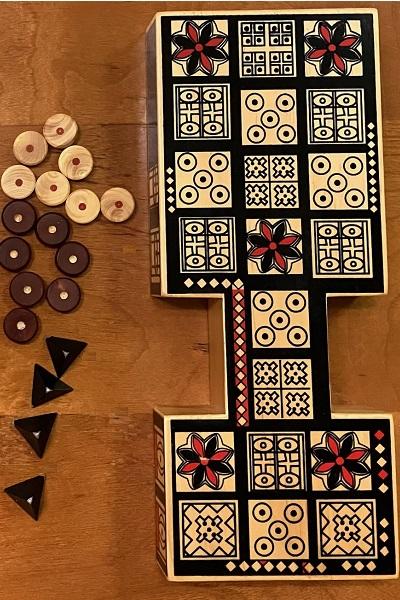
[syn=1574861840]
[syn= 9780312611590]
[syn=9781844487196]
[syn=9781844481996]
[syn=0873495101]
[syn=1402719841]
[syn=9781551524061]
[syn=9781405351720]
I have always been fascinated by the look and feel of designs made by working thread through fabric. Although there tends to be more interest these days in woven needlecraft such as crochet and knitting, many types of needlework still have adherents. Many of the books published about needlework focus not necessarily on patterns, but on the variety of stitches that can be used, whether they are for freehand embroidery, or counted thread work.
Donna Kooler's encyclopedia of needlework 746.44 K82
This volume is a great way to explore a variety of stitchery types, and provides a wonderful introduction to variations of run-of-the-mill techniques the average stitcher might already know, and to some s/he may not. Kooler organizes her book into three parts: needlepoint; embroidery; and counted thread work. Out of these three parts, she further divided them down into the history of each technique, the materials needs to complete a project, and how-to instructions for basic stitches.
The needlework doctor : how to solve every kind of needlework problem / Mary Kay Davis 746.4 D26
Written in the early 1980s, this stitching helper gives practical how-to tips and answers for common questions about problems stitchers tend to face, from project storage to correcting mistakes. Although the number of suppliers has certainly changed since the time of printing, how to begin a piece, continue it, and then present the finished project have not changed in the thirty years since the book was published.
Stitch-opedia : the only embroidery reference you'll ever need / Helen Winthorpe Kendrick 746.44 K336
The title is a bit presumptuous, but this work is good as a reference for the journeyman stitcher who doesn’t need a lot of hand-holding. The majority of the text is geared toward improvement of current skills; a typical entry might suggest ways a stitch could be used and tips on how to make it look best. One useful feature is the listing of stitches; a sample entry for this list would give the name of a stitch explained in the book, a picture of it, and list which embroidery techniques employ it. The book ends with a variety of projects for every stitching technique covered elsewhere.
The stitching book : a step-by-step guide to surface stitching techniques / Patricia Bage, et al. 746.44 S862
With chapters by several different authors, this book is a full-color compendium of eight well-written beginner’s guides previously published by Search Press. Both counted and freehand techniques are covered. Each section first begins with an overview of the stitching style; is followed by the materials needed to use the techniques shown; and then continues with step-by-step illustrated instructions of multiple stitches, as well as several patterns.



